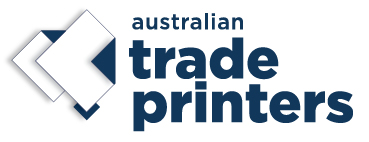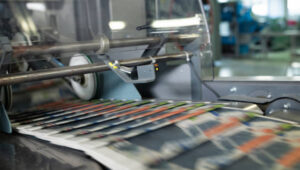
Welcome to the world of trade printing! If you’re a beginner looking to dive into the trade print industry, you’ve come to the right place. In this comprehensive guide, we’ll provide you with all the essential information you need to know to get started in trade printing. From understanding the concept of trade print to selecting the right trade printer for your project, we’ll cover it all. By the end of this guide, you’ll have a solid foundation and be ready to embark on your trade print journey.
Key Takeaways
- Trade print offers great opportunities for beginners to enter the printing industry.
- Understanding the concept of trade print and its benefits is crucial.
- Artwork preparation plays a vital role in ensuring optimal print quality.
- Digital and offset printing are the most common types of trade print services.
- Choosing the right trade printer is essential for a successful printing project.
Understanding Trade Printing and Its Benefits
Defining Trade Print
Trade printing is a specialized printing service that caters to businesses and graphic designers. Unlike traditional printing services, trade print focuses on providing high-quality printing at wholesale prices.
Advantages for Businesses and Graphic Designers
Trade printing offers numerous benefits for both businesses and graphic designers. Firstly, it allows businesses to access professional printing services without the cost of maintaining their own printing equipment. Additionally, trade printers often offer a wider range of printing options and finishes, giving businesses the opportunity to create eye-catching and impressive marketing materials.
Graphic designers also benefit from trade print services, as it enables them to offer their clients high-quality printing at competitive prices. By partnering with a trade printer, designers can expand their offerings and enhance the overall value they provide to their clients.
Impact on Cost-Effectiveness and Turnaround Times
One of the key advantages of trade printing is its cost-effectiveness. By eliminating the need for in-house printing equipment and overhead costs, businesses can save a significant amount of money on their printing projects. Trade print services often offer discounted rates for bulk orders, allowing businesses to further reduce their printing expenses.
Turnaround times are also improved with trade printing. With dedicated printing facilities and streamlined processes, trade printers can deliver faster turnaround times compared to traditional printing methods. This means that businesses and graphic designers can meet tight deadlines without sacrificing the quality of their printed materials.
Overall, trade printing offers businesses and graphic designers a cost-effective solution for high-quality printing with improved turnaround times. Whether you’re a business looking to create impactful marketing materials or a graphic designer aiming to offer professional printing services, trade print is a valuable option that can help you achieve your goals.
Essentials of Trade Print Artwork Preparation
Artwork preparation is a critical aspect of trade print. To ensure optimal print quality and meet the requirements of trade printers, it is important to follow certain guidelines and considerations when preparing your artwork.
File Formats: When preparing artwork for trade printing, it is recommended to save your files in a print-ready format such as PDF or TIFF. These formats preserve the integrity of your design and ensure compatibility with different printing systems.
Resolution: High resolution is essential for crisp and clear prints. Set your images and graphics to a resolution of at least 300 dots per inch (DPI) to achieve optimal print quality. This ensures that your artwork appears sharp and professional.
Color Modes: Trade printers typically require artwork in a CMYK color mode. This color mode is optimized for print production and allows for accurate color representation. Convert your artwork to CMYK to ensure consistent and vibrant colors in your prints.
Technical Specifications: Pay attention to technical specifications such as bleeds, trim marks, and safe zones when preparing your artwork. Bleeds extend the artwork beyond the trim area to prevent white borders after cutting. Trim marks indicate where the artwork should be trimmed, and safe zones ensure that important elements are not cut off during the trimming process.
Proofreading and Final Checks: Before sending your artwork to a trade printer, make sure to proofread all text, check for any errors or typos, and ensure that all images and graphics are placed correctly. A thorough final check will help avoid any potential issues during the printing process.
| Artwork Preparation Checklist |
|---|
| Save your artwork in a print-ready format such as PDF or TIFF. |
| Set your images and graphics to a resolution of at least 300 DPI. |
| Convert your artwork to CMYK color mode for accurate color representation. |
| Ensure that your artwork includes bleeds, trim marks, and safe zones. |
| Proofread your artwork and perform a final check before sending it to the printer. |
By following these essential steps and considerations for artwork preparation in trade printing, you can ensure that your prints turn out exactly as intended and meet the requirements of trade printers. Taking the time to prepare your artwork properly will result in professional-looking prints that leave a lasting impression.
Types of Trade Print Services: Digital vs. Offset Printing
When it comes to trade print services, two common options are digital printing and offset printing. Each method has its own advantages and limitations, so it’s important to understand the differences before making a decision. In this section, we will compare and contrast digital printing and offset printing, helping you choose the right trade print service for your specific needs.
Digital Printing:

Digital printing is a modern printing method that uses digital files to directly print the desired content onto the desired media. It offers several benefits:
- Quick turnaround times: Digital printing eliminates the need for plates and extensive setup, allowing for faster production.
- Cost-effective for small runs: Digital printing is ideal for small print quantities, saving you money compared to offset printing for shorter print runs.
- Variable data printing: Digital printing enables personalized print materials with variable data, such as names, addresses, or images.
- High-quality prints: Advances in technology have improved the print quality of digital printing, making it suitable for various applications.
Offset Printing:

Offset printing, on the other hand, is an older printing method that involves transferring ink from a plate to a rubber blanket before it is applied to the printing surface. Here are some advantages of offset printing:
- Superior print quality: Offset printing produces sharp, precise, and vibrant prints, making it the preferred choice for high-quality marketing materials.
- Cost-effective for large runs: Offset printing becomes cost-effective for larger print quantities because the setup costs are distributed over a higher number of prints.
- Wide range of paper options: With offset printing, you have a vast selection of paper stocks and finishes to choose from, allowing for more customization.
- Pantone color matching: Offset printing can accurately reproduce Pantone colors, ensuring consistent branding across different printed materials.
In summary, digital printing offers fast turnaround times, cost-effectiveness for small runs, and the ability to personalize prints. On the other hand, offset printing provides superior print quality, cost-effectiveness for large runs, and a wide range of paper options. Consider your specific printing needs and budget to determine which trade print service is the best fit for your project.
Selecting the Right Trade Printer for Your Project
Choosing the right trade printer is crucial for the success of your printing project. With so many options available, it’s important to consider several factors that will ensure you find a reliable service provider who offers competitive prices and high-quality products.
Factors to Consider When Choosing a Printer
When selecting a trade printer, there are several key factors to consider:
- Capabilities: Assess the printer’s capabilities to ensure they can meet your specific printing requirements. Do they offer the printing method, materials, and finishes you need?
- Equipment: Take note of the equipment the printer uses. State-of-the-art machinery often results in better print quality and faster turnaround times.
- Experience: Look for a printer with a proven track record and extensive experience in the trade print industry. This can give you confidence in their ability to deliver excellent results.
- Customer Reviews: Read customer reviews and testimonials to gauge the printer’s reputation and customer satisfaction levels. This can provide valuable insights into the reliability and quality of their services.
Finding Reliable Service Providers
When it comes to trade printing, reliability is of utmost importance. Here are some tips to find reliable service providers:
- Ask for recommendations: Seek recommendations from industry professionals or colleagues who have experience with trade printers.
- Check certifications and affiliations: Look for printers that hold relevant certifications and are members of professional associations. This indicates their commitment to quality and adherence to industry standards.
- Request samples: Request samples from potential service providers to assess the quality of their work and ensure it aligns with your expectations.
The Importance of Competitive Prices and Quality Products
While cost is an important consideration, it should not be the sole determining factor when selecting a trade printer. Strike a balance between competitive prices and quality products to ensure you get the best value for your investment.
A printer that offers competitive prices without compromising on product quality can provide you with cost-effective solutions that meet your printing needs. Additionally, high-quality products ensure your final prints are professional-looking and reflect positively on your brand or business.
By taking these factors into account and thoroughly evaluating potential trade printers, you can make an informed decision and choose a reliable service provider who offers competitive prices and delivers quality products for your printing projects.
The Role of Sample Packs in Trade Printing
Sample packs play a vital role in trade printing, allowing you to assess the quality, materials, and finishes offered by trade printers. By requesting and reviewing sample packs before placing your order, you can make more informed decisions and ensure that the final printed products meet your expectations.
When it comes to trade printing, seeing is believing. Sample packs provide you with the opportunity to examine the paper quality, texture, and thickness. You can feel the finishes, such as glossy or matte, and evaluate their impact on the overall look and feel of the printed materials. By having tangible examples of the trade printer’s work in your hands, you can confidently choose the right materials for your project.
Furthermore, sample packs allow you to assess the print quality, color accuracy, and precision of the trade printer. You can closely examine the clarity and sharpness of the printed images, ensuring that your design elements come out as intended. By comparing sample packs from different trade printers, you can make an informed decision based on the quality of their work.
Another benefit of sample packs is the opportunity to test different finishes and coatings. You can explore options such as UV coating, embossing, foiling, and spot varnish, among others. By visualizing how these finishes enhance your printed materials, you can add an extra touch of professionalism and make your designs stand out.
Requesting Sample Packs
Most trade printers offer sample packs upon request. You can contact the trade printer’s customer service or visit their website to request a sample pack that includes a variety of their printed materials. Keep in mind that there may be a small fee associated with the sample pack, but it’s a worthwhile investment to ensure the quality of your final products.
When requesting a sample pack, specify your specific requirements and the types of materials you are interested in. This will help the trade printer customize the sample pack and provide you with relevant examples that align with your project needs.
Reviewing Sample Packs
Once you receive the sample pack, take the time to thoroughly review and examine each printed material. Pay attention to the quality, color accuracy, and finishes. Take note of any specific aspects that stand out to you, both positively and negatively.
Consider how the sample pack aligns with your project requirements and design vision. Evaluate whether the trade printer’s quality and offerings match your expectations. It’s crucial to ensure that the sample pack reflects the level of excellence you desire for your printed materials.
Based on your review, you can confidently proceed with selecting the trade printer that best suits your needs. By understanding the role of sample packs and utilizing them effectively, you can make informed decisions and achieve exceptional results in your trade printing projects.
Optimising Costs: How Trade Print Can Save You Money
Trade print offers numerous cost-saving benefits that can help businesses and individuals maximize their budget without compromising the quality of their print materials. By taking advantage of trade printing services, you can achieve significant savings compared to traditional printing methods.
Analysing Cost-Saving Benefits
One of the primary advantages of trade print is its ability to reduce costs. Trade printers typically operate on a larger scale, allowing them to benefit from economies of scale and negotiate better prices with suppliers. These savings are then passed on to customers, resulting in lower printing costs for your projects.
In addition to cost savings, trade print can also help you save on time and resources. By outsourcing your printing needs to a trade printer, you can free up your internal resources and focus on other core business activities. This increased efficiency can lead to further cost savings and improved productivity.
Conducting a Price Comparison
When considering trade printing, it’s essential to conduct a price comparison among different trade printers. This will help you find the best deals and ensure that you are getting the most cost-effective solutions for your printing needs.
When comparing prices, it’s important to consider not only the upfront cost but also the overall value. Look for trade printers that offer competitive prices while maintaining high-quality standards. Take into account factors such as print quality, materials used, and customer service to make an informed decision that balances cost and quality.
Strategies to Maximise Budget Efficiency
In addition to choosing the right trade printer, there are several strategies you can implement to maximise your budget efficiency when it comes to trade printing.
- Plan ahead: By planning your print projects in advance, you can take advantage of bulk discounts and avoid rush fees, saving you money in the long run.
- Optimize design: Simple and minimalist designs can be more cost-effective to print compared to complex graphics. Opt for designs that use fewer colors or utilize standard sizes to reduce printing costs.
- Utilize templates: Using pre-designed templates can save you time and money, as they often come with optimized layouts and specifications that are print-ready.
- Order in bulk: Many trade printers offer volume discounts, so ordering in larger quantities can lead to significant cost savings.
- Explore different finishes: While certain finishes may add to the overall cost, they can also enhance the visual appeal and perceived value of your printed materials. Consider your target audience and the impact different finishes may have on your project before making a final decision.
By implementing these strategies, you can make the most of your budget and ensure your trade printing investments are cost-effective and efficient.
Artwork Specifications for Trade Printing
When it comes to trade printing, understanding the artwork specifications is crucial to ensure the best results. In this section, we will discuss the correct formatting for press quality artwork and provide a comprehensive overview of the important elements involved in trade print artwork preparation.
Correct Formatting for Press Quality Artwork
In order to achieve press quality artwork, it is essential to follow the correct formatting guidelines. Trade printers typically require artwork to be submitted in specific file formats, such as PDF or TIFF. These formats help ensure that the artwork remains intact and that there are no issues during the printing process.
Additionally, it is important to pay attention to color profiles and resolution. Trade printers often have specific color profiles that they prefer, such as CMYK or Pantone, to ensure accurate color reproduction. As for resolution, it is typically recommended to use a resolution of 300 DPI (dots per inch) to maintain optimal print quality.
Understanding Bleed, Gutter, and Size Requirements
Trade printers often require artwork to have bleed and gutter to ensure that there are no white edges or gaps around the printed materials. Bleed refers to extending the artwork beyond the final trim size, while gutter refers to the space between two pages in a multi-page document. These elements help prevent any unintended cropping or misalignment during the trimming process.
In addition to bleed and gutter, it is crucial to be aware of the size requirements set by the trade printer. Each printing project may have specific size requirements, such as A4 or business card dimensions. By adhering to these requirements, you can ensure that your artwork fits perfectly on the printed materials.
Materials and Finishing Styles: What to Know
When preparing artwork for trade printing, it is important to consider the materials and finishing styles that will be used. Trade printers offer a variety of materials, such as different types of paper or cardstock, that can enhance the overall look and feel of your printed materials.
Finishing styles, such as matte or glossy coatings, foil stamping, embossing, or die-cutting, can add a touch of professionalism and uniqueness to your printed products. Understanding the available options allows you to select the most suitable materials and finishing styles for your specific project.
| Materials | Finishing Styles |
|---|---|
| Paper | Matte coating |
| Cardstock | Glossy coating |
| Vinyl | Foil stamping |
| Fabric | Embossing |
| Plastic | Die-cutting |
By familiarizing yourself with the different materials and finishing styles available, you can make informed decisions to create visually appealing and professionally finished printed materials.
Now that you have a deeper understanding of the artwork specifications for trade printing, you can confidently prepare and submit your artwork to trade printers, ensuring that it meets the necessary requirements for a successful print job.
Expanding Your Services: From Business Cards to Banners
In the world of trade print, there is a vast potential for expanding your services and reaching a wider range of customers. By offering additional print products beyond the traditional business cards, you can diversify your offerings and increase your revenue. In this section, we will explore the benefits and considerations of expanding your services from business cards to banners, allowing you to tap into new markets and meet the diverse printing needs of your clients.
Expanding your services to include banners offers several advantages. Banners are a popular marketing tool used by businesses and organizations of all sizes. They allow for large-scale advertising and promotions, making them highly effective in attracting attention and reaching a larger audience. By offering banner printing services, you can become a one-stop-shop for your clients’ marketing needs, positioning yourself as a trusted and reliable partner in their advertising efforts.
When expanding your services to include banners, there are important considerations to keep in mind. Banners come in various sizes, materials, and finishes, each suited for different purposes and environments. Understanding the specific requirements of your clients and offering a range of options will help you provide tailored solutions that meet their unique needs. Additionally, investing in the necessary equipment and materials for banner printing will ensure that you can deliver high-quality results that exceed your clients’ expectations.
By expanding your services to include business cards and banners, you can broaden your customer base and attract new clients. Business cards are an essential networking tool for professionals and businesses. By offering business card printing services, you become a valuable resource for individuals and companies seeking professional and well-designed business cards.
To successfully expand your services, it is crucial to communicate the benefits to your existing and potential clients. Highlight the convenience of a single point of contact for their various printing needs, emphasizing the cost-effectiveness and time-saving advantages of choosing your trade print services. By positioning yourself as a reliable and versatile provider, you can build strong relationships with your clients and secure their long-term loyalty.
| Business Cards | Banners | |
|---|---|---|
| Benefits | Enhances professional image Networking tool Pocket-sized and portable Creative design opportunities | Large-scale advertising Attracts attention Reaches a wider audience Highly versatile in marketing |
| Considerations | Various cardstock options Design and layout customization Foil stamping and embossing Print quality and accuracy | Different sizes and materials Weather resistance Hanging and display options Vibrant color production |
Trade Printing for T-shirts: A Lucrative Niche
Trade printing offers a lucrative opportunity for entrepreneurs looking to venture into the t-shirt business. In this section, we will provide valuable insights and guidance on how to start your own t-shirt business. We will cover everything from sourcing high-quality garments to implementing design techniques and exploring various production methods. Additionally, we will share effective marketing strategies to help you attract customers and generate sales for your trade printed apparel. By the end of this section, you will have the knowledge and tools to establish a successful t-shirt business through trade printing.
Starting Your Own T-Shirt Business
If you’re passionate about t-shirts and want to turn it into a profitable business, trade printing is the way to go. To get started, you need to decide on your niche and target market. Research trends and identify unique selling points that will set your t-shirt business apart from the competition. Develop a brand and create a compelling logo that resonates with your target audience.
Next, you’ll need to source high-quality garments that reflect the style and quality of your brand. Look for reliable suppliers that offer a wide range of t-shirt options in different sizes and materials. Consider factors such as durability, comfort, and eco-friendly options to cater to the preferences of your target market. Build strong relationships with your suppliers to ensure a steady and consistent supply of t-shirts.
Exploring Production Methods and Design Techniques
When it comes to trade printing for t-shirts, it’s essential to understand the various production methods and design techniques available. Screen printing, heat transfer, and direct-to-garment printing are some of the popular methods used in the industry. Each method has its pros and cons, so it’s crucial to consider factors such as cost, quality, and versatility when choosing the right production method for your t-shirt business.
Design plays a vital role in the success of your t-shirt business. Experiment with different design techniques such as embroidery, applique, and vinyl printing to create unique and eye-catching designs. Consider collaborating with local artists or graphic designers to bring fresh and innovative ideas to your t-shirt designs. Stay updated with current design trends and tailor your designs to appeal to your target market’s preferences.
Marketing Strategies for Your Trade Printed Apparel
Effective marketing is essential to promote your trade printed apparel and attract customers to your t-shirt business. Start by creating a compelling online presence through a well-designed website or e-commerce platform. Showcase your t-shirt designs with high-quality product images and detailed descriptions. Implement search engine optimization (SEO) techniques to improve your website’s visibility in search engine results.
Utilize social media platforms such as Instagram, Facebook, and Pinterest to showcase your t-shirt designs, engage with your target audience, and build a loyal customer base. Collaborate with influencers or brand ambassadors to promote your trade printed apparel to their followers. Host giveaways, contests, or limited-time promotions to create buzz around your t-shirt business and encourage sales.
Networking and participating in local events such as craft fairs, pop-up shops, or trade shows can also help you reach a wider audience and gain exposure for your t-shirt business. Consider partnering with local businesses or organizations for promotional collaborations that align with your brand values.
Remember, building a successful t-shirt business takes time and effort. Continuously analyze your marketing strategies, monitor sales data, and gather customer feedback to refine your approach and stay ahead of the competition. With dedication, creativity, and strategic planning, you can turn your passion for t-shirts into a thriving trade printing business.
Setting Up Your First Trade Print Order

Setting up your first trade print order may seem overwhelming, but with the right guidance, it can be a smooth and efficient process. In this section, we will provide a step-by-step guide on how to set up your first trade print order, ensuring that you have all the necessary knowledge and tools to make it a success.
- Selecting the Appropriate Trade Printer: Begin by researching and evaluating different trade printers. Look for providers that offer the specific services you require and have a good reputation in the industry. Consider factors like capabilities, equipment, experience, and customer reviews to make an informed decision.
- Preparing the Artwork: Your artwork plays a crucial role in the print order process. Make sure your artwork is print-ready by following the trade printer’s specifications. Pay attention to file formats, color profiles, and resolution to ensure optimal print quality.
- Specifying the Requirements: Clearly communicate your requirements to the trade printer. Provide details such as the desired print quantity, paper type, size, and any special finishing options. This will help the printer understand your project and deliver the desired results.
- Managing the Ordering Process: Once you have finalized the details, it’s time to place your order. Some trade printers have online ordering systems, while others prefer email or phone communication. Follow the printer’s instructions for submitting the order, supplying the artwork, and making payment.
By following these steps, you will be well-prepared to embark on your first trade print order. Remember to stay organized, communicate clearly with your chosen trade printer, and carefully review all specifications to ensure a successful print job. Good luck with your first trade print order!
Conclusion
In conclusion, the trade print journey for beginners is an exciting and valuable endeavor that offers a range of benefits. Throughout this article, we have covered all the essential information you need to know to get started in the trade print industry.
By understanding the concept of trade printing and its advantages, you can make informed decisions that will enhance cost-effectiveness and improve turnaround times for your printing projects. The essential steps and considerations for preparing artwork for trade printing have been outlined, ensuring that your designs meet the requirements of trade printers.
Additionally, we have explored different types of trade print services, such as digital and offset printing, giving you the knowledge to choose the most suitable option for your needs. Selecting the right trade printer is crucial, and we have provided factors to consider, tips for finding reliable service providers, and emphasized the importance of competitive prices and quality products.
Furthermore, we discussed the role of sample packs in trade printing and how they can help you assess the quality and finishes offered by trade printers. We highlighted the cost-saving benefits of trade print and provided strategies to maximize budget efficiency. Understanding the artwork specifications, materials, and finishing styles specific to trade printing will enable you to create artwork that meets the requirements and achieves the desired results.
Expanding your services to include products like business cards and banners can broaden your customer base and increase revenue. Trade printing for t-shirts presents a lucrative niche, and we guided you through starting your own t-shirt business, exploring production methods, design techniques, and effective marketing strategies.
Finally, we provided a step-by-step guide on how to set up your first trade print order, ensuring a smooth and efficient process. With the knowledge and takeaways gained from this comprehensive guide, you are now equipped to confidently pursue your trade print endeavors.
Key Takeaways for Getting Started with Trade Printing
- Understand the concept and advantages of trade printing.
- Follow the essential steps for preparing artwork and meeting trade printer requirements.
- Compare and choose between different types of trade print services.
- Select a trade printer based on factors such as capabilities, experience, and customer reviews.
- Request and review sample packs to assess quality and finishes.
- Maximize cost savings and budget efficiency in trade printing.
- Familiarize yourself with artwork specifications, materials, and finishing styles for optimal results.
- Explore opportunities to expand your services and cater to diverse printing needs.
- Start a lucrative t-shirt business through trade printing.
- Set up your first trade print order by selecting a trade printer and managing the process effectively.
With these key takeaways, you have the foundation to begin your trade print journey and unlock the many opportunities this industry has to offer.
FAQ
What is trade print?
Trade print refers to a printing service that is specifically tailored for graphic designers and businesses in the printing industry. It offers competitive prices and a reliable service to trade customers who qualify.
How is trade print different from other types of printing services?
Trade print differs from other types of printing services as it is exclusively available to trade customers, such as graphic designers and businesses in the industry. It offers competitive prices, access to a wide range of printing equipment, and a reliable and efficient production process.
What are the benefits of trade print for businesses and graphic designers?
Trade print offers several advantages for businesses and graphic designers. It provides cost-effective printing solutions, improved turnaround times, and a wide range of high-quality products. It also allows businesses to focus on their core competencies while having peace of mind that their printing needs will be taken care of by a professional trade printer.
How can trade print help businesses save money?
Trade print offers competitive prices, allowing businesses to save money on their printing projects. By working with a trade printer, businesses can access cost-effective solutions without compromising on the quality of their printed materials or marketing materials.
How can I ensure that my artwork is print-ready for trade printing?
To ensure your artwork is print-ready for trade printing, you should follow the guidelines provided by the trade printer regarding file formats, resolution, and color modes. It is also important to consider factors such as bleed, gutter, and size requirements. By following these specifications, you can ensure that your artwork meets the requirements of trade printers and achieves optimal print quality.
What are the different types of trade print services available?
The two main types of trade print services are digital printing and offset printing. Digital printing offers flexibility, quick turnaround times, and cost-effective options for small to medium print runs. Offset printing, on the other hand, is ideal for large print runs and provides superior color accuracy and image quality.
How do I choose the right trade printer for my project?
When selecting a trade printer, it is important to consider factors such as the printer’s capabilities, equipment, experience, and customer reviews. It is also advisable to request sample packs to assess the quality of their work. Additionally, look for trade printers that offer competitive prices and high-quality products to ensure you receive the best value for your money.
Can you explain the role of sample packs in trade printing?
Sample packs play a vital role in trade printing. They allow you to assess the quality, materials, and finishes offered by trade printers before placing your order. Reviewing sample packs can help you make more informed decisions and ensure that the final printed products meet your expectations.
How can trade print help me expand my services?
Trade print offers a wide range of opportunities to expand your services. For example, you can start with business cards and gradually offer additional print products such as brochures, flyers, banners, and more. This allows you to cater to various printing needs, broaden your customer base, and increase your revenue.
How can I set up my first trade print order?
Setting up your first trade print order can be made easy by following a few simple steps. These steps include selecting the appropriate trade printer, preparing the artwork according to their specifications, specifying your requirements, and managing the ordering process. By following these steps, you can ensure a smooth and efficient experience with your first trade print order.






